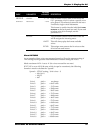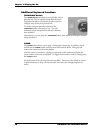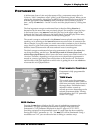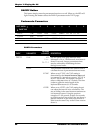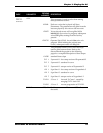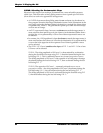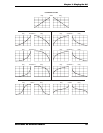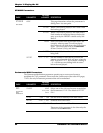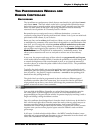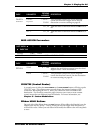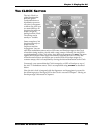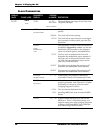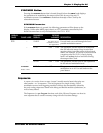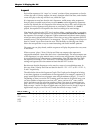
Chapter 2: Playing the A6
ANDROMEDA A6 REFERENCE MANUAL 65
THE PERFORMANCE WHEELS AND
RIBBON CONTROLLER
BACKGROUND
The A6 utilizes two performance wheels that are used mainly for pitch bend (PITCH)
and vibrato (
MOD). The Pitch wheel on the left is a spring-loaded wheel that snaps
back to its center or neutral position when released, and is normally used for pitch
bend. The Mod wheel on the right is not spring loaded and must be manually
returned to its off position. It is normally used for vibrato.
But note that you can assign each one to a different destination – you are not
confined to using them for strictly pitch bend and vibrato. In fact, you can make both
pitch bend or both vibrato, if you so desire.
Better yet, they can be neither pitch bend nor vibrato, as you can assign these wheels
to modulate any parameter of the sound that is designated as a mod destination. But
best of all, you can assign the wheels to perform multiple modulations at the same
time. Imagine a wheel causing vibrato, increasing the reverb amount, fading in the
sub-oscillators and triggering the sequencer all at once. See Chapter 9: Custom
Modulations for an in-depth look at Andromeda’s “modulation matrix” that
allows you to customize mod routes or mod paths to achieve out-of-the-ordinary
results.
In any case, the purpose and range of these wheels are programmable per Program,
which makes them incredibly flexible. Consider the possibility of a wheel being used
to control the brightness of the sound instead of pitch, or to control the amount of
reverb or chorus, or to alter the pulse width of one (or both) VCOs... The possibilities
are virtually limitless.
Typically, the pitch wheel is set up so that pushing it away from you bends played
notes up in pitch and pulling bends them down. The A6’s pitch wheel however, can
have its polarity – the positive/negative attributes – reversed so that pushing pitch-
bends down and pulling bends up.
The pitch wheel can also be programmed so that it can have a different type of
modulation on either side of the center stop. You can set the wheel to pitch bend
when pushed (up or down, your choice) and change the portamento time when
pulled, as just one of many, many examples.
You can think of the Ribbon Controller as a wheel that’s been stretched across the
A6’s front panel. It can be assigned to any of the A6’s mod destinations and is
programmable per Program like the wheels. It operates simply by touching it with a
finger and sliding it along the ribbon’s surface.
One of its attributes that distinguishes it from the wheels is that it may be divided in
half—the left and right sides (from the center line mark on the top panel) may act as
separate controllers aimed at separate destinations. And because the Ribbon
Controller has a much longer travel than the wheels, it typically has a more accurate
response since you have more physical space across the ribbon’s surface within a
given range.
In all cases – for both wheels and the ribbon – the MIDI Controller Number is user-
selectable and programmable per Program so you can determine how the wheels will
affect other instruments via MIDI for each Program.



